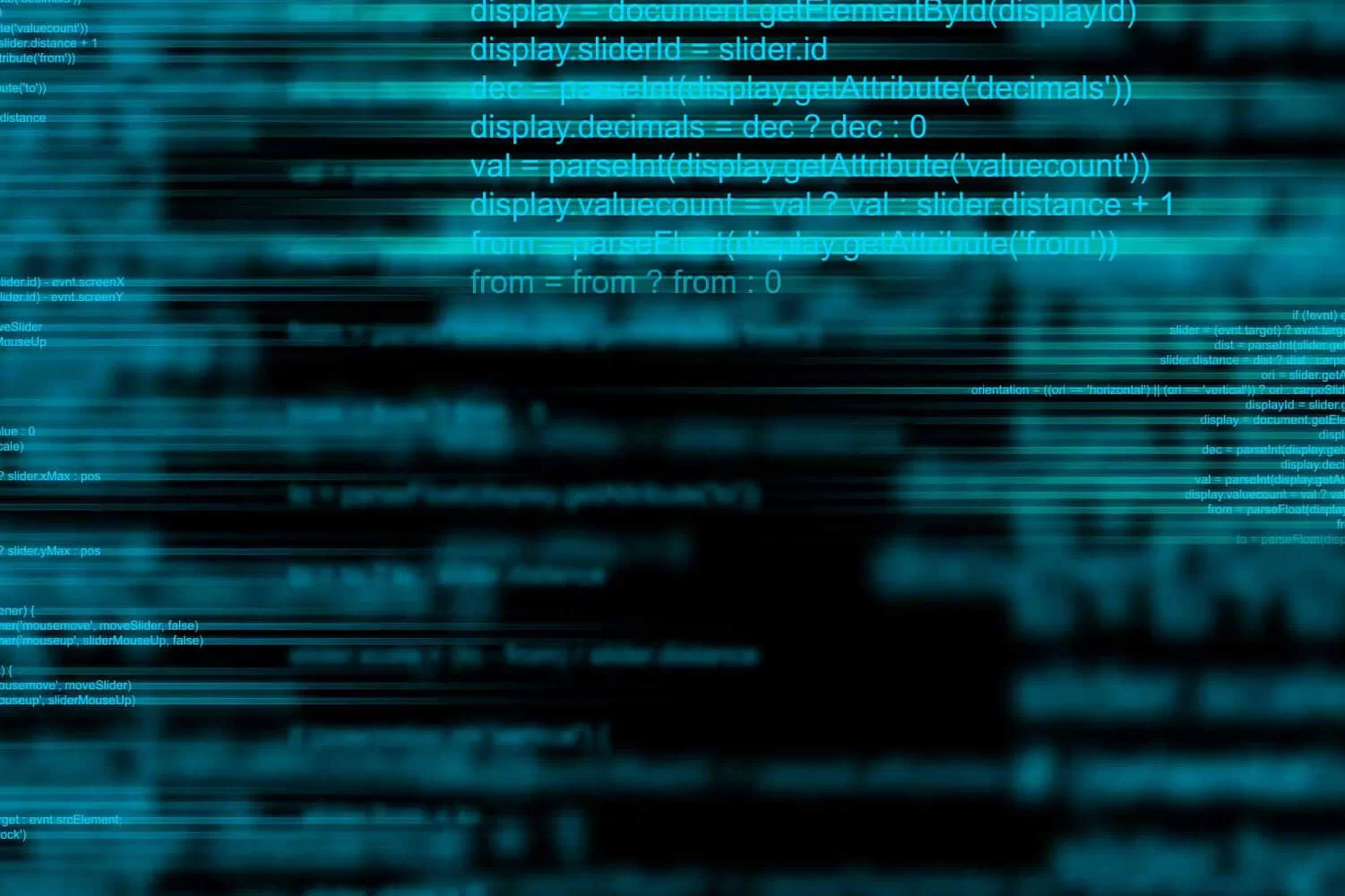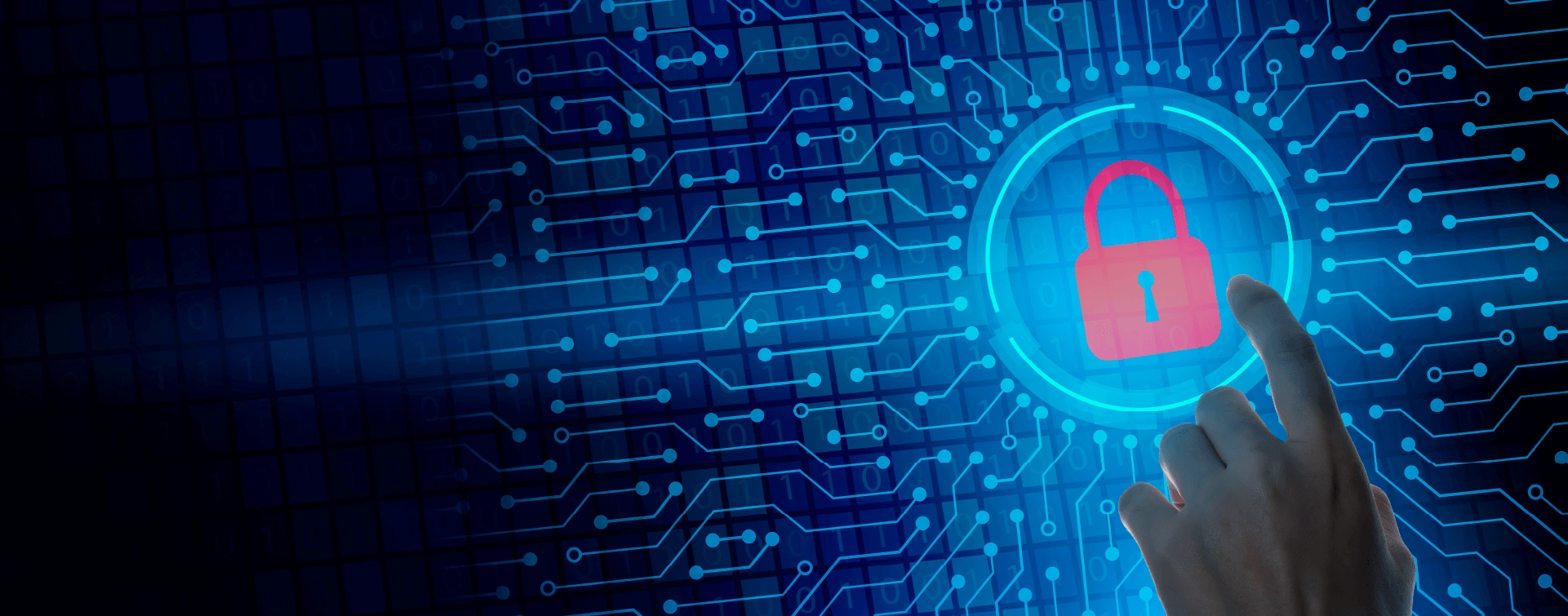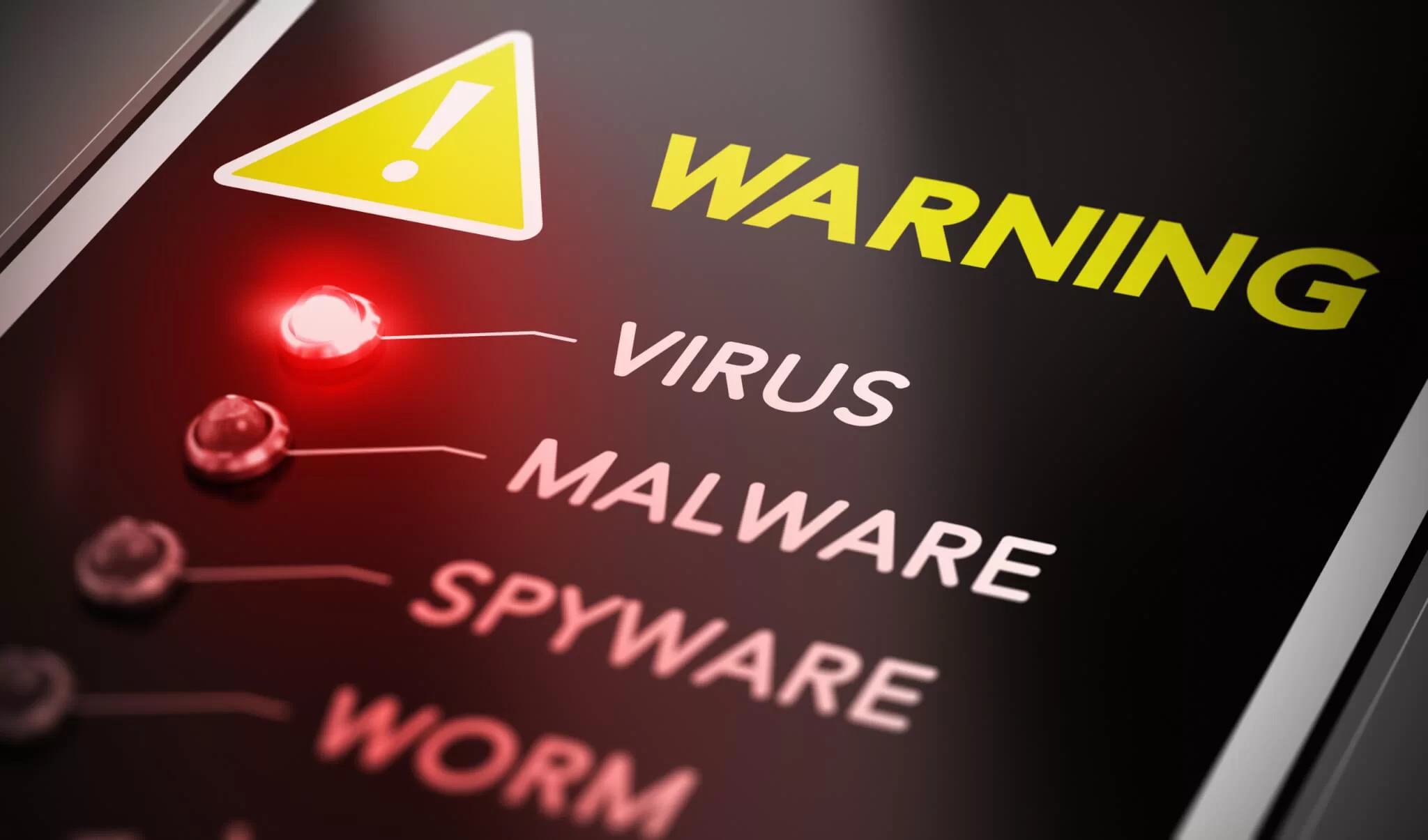Familiarity with types of Computer Malware and their history
At the very beginning, when we hear computer malware, we unconsciously remember the inhuman things that some programmers may do for various reasons. Malware, derived from the concept of Malware, is a combination of Malicious Software called code that performs corrupt and illegal actions. In other words, Malware is the same lines of programming code, but users are not interested in running them on the computer.

From the very beginning of the emergence of computers and basic processors, the production and writing of computer codes also began. You cannot use the power of hardware without having a program. Many codes and software have been produced to make processes easier, including the volume of written codes. But in the meantime, you will also see some software or codes designed by programmers to do special and destructive things known as computer malware.
What is the concept of computer malware?
If you deal with programming and generating computer codes, you must know that codes must be written to create any software. These codes are written in different languages, converted into an executable file, and can be used. Designing and writing a computer code that can provide a simple output may not take much time. For example, suppose you intend to produce a short beep through the computer speaker; for this, only a few lines will be enough to reach the desired output.

But suppose the same short sound is programmed continuously for a long time. In that case, you are surely faced with an annoying sound you don’t want to hear. With just a few lines, you can create a program called Malwarcalled to annoy users. Of course, Malware usually continues to work silently, and you may not always notice its presence.
Computer malware is a general term that includes many viruses, worms, trojans, spyware, rootkits, keyloggers, and even annoying adware.
Are computer viruses and Malware dangerous?
In answer to this question, we must say no. Viruses and Malware are not necessarily dangerous in all situations, and sometimes they; sometimes a meaninglesgoalsals and even for fun. You see a lot of Malware that, if you run it unknowingly, you end up with a viral joke that might be playing a loud beeping sound from your computer’s speakers.

However, a computer code may be professionally designed to do a specific task. For example, throughout the history of computers, you see spy tools that even security software can’t detect for a long time.
Therefore, whether computer malware is dangerous depends on the coding its designer has pursued in its creation and production.
What are the purpose of computer virus and malware design?
You might be interested to learn more about the design goals of Malware. These tools are designed for entertainment to the destruction of a large part, and in many cases, the designer has no other purpose than to prove his abilities. Many programmers design a virus to attack a specific company like Apple; the earliest one was released in 1981, called Elk Cloner. The Malware quickly spread to Apple II machines via early floppy disks, and the show’s work was just a sarcastic message.

Maybe the matter will not end well with these simple things, and the design of the malicious code will pursue bigger goals. For example, it was in 1989 that the first ransomware called AIDS was designed and took many victims. This computer malware was provided to the World Health Organization conference participants through floppy disks, which contained software for diagnosing the possibility of AIDS. But besides that, the designer and programmer had also used ransomware in addition to this software, which was activated after turning the computer on and off ninety times and hiding or encrypting files and folders in the C drive.

In this situation, you also see the malware Keylogger, which does its work secretly and silently. These tools are designed to store the information typed from the keyboard and most likely will send this information to a predetermined source or specific server. The main purpose of these tools is to access user passwords and important information like this.
What are the types of computer malware?
There are different types of Malware, and perhaps more; they can be categorized. Of course, if we consider the general category, the number of these malicious Mathis malicious Malwarember of fingers on one hand.
computer virus
A computer virus is what users use to refer to all types of Malware. However, it is better to know that not all Malware is a virus, and maybe computer malware does something different than a virus. A virus is one of the types of Malware, and when it is ex, when is automatically replicated and can affect other software.

Usually,r virus designers use social engineering to replicate their product and get it into the hands of more users. It should be noted that due to the type of structure of the operating systems, usually Windows and Macintosh are the main targets of viruses, and these tools are coded to achieve the following goals:
- corruption
- Sending unwanted and annoying messages
- entertainment
- Show the power of designer programming
- Destruction of a company or organization
- Showing software bugs and software bugs of companies (positive goals)
Worm
Computer worms are malicious tools whose structure is based on survival and reproduction. These tools exist in the source system and can be transferred to their target systems and gained power with the advent of email systems. Emails could become a suitable platform for the proliferation of this computer malware. You usually see these malicious products in the attachment files section of the email.
The network is the main method of transmission of this computer malware, and due to the network’s speed, these tools can also have a high speed in terms of replication between systems. Interestingly, many worms are designed to replicate and do not alter the system. However, some of these tools may affect network traffic and security and reduce its speed in addition to replication. The goals of designing and publishing the computer worm include the following:
- Creating problems in the network
- Excessive bandwidth consumption
- Occupying storage space
- Destruction of information
- Information Sharing
Trojan
A Trojan, also known as a Trojan horse, is a computer malware that you won’t know is malicious when you see it. This tool is a computer program or an executable program that is professionally designed, and when you see it, you may imagine that you are running a normal Windows program.

The Malware may be sent as an email attachment, in which case the Trojan will be automatically installed upon opening. Trojans are usually spread through social engineering and email; even visiting a malicious website can infect your system.
One of the main and most famous trojan spreads is websites that warn with a pop-up page that your system is infected and you need to run a program to clean your system.
The following goals are followed for the design and development of Trojan computer malware:
- Access to important information
- Save information and files
- Destruction of information
- Information theft
Ransomware
Ransomware is a tool that encrypts user information, and instead of releasing it, its coders demand money. The designers of these tools usually use cryptography to receive the specified amounts. Of course, it is interesting to know that ransomware designers’ main victims are usually sensitive sectors such as large companies, hospitals, administrative centers, etc.
After running ransomware unknowingly, it only takes a few minutes to encrypt, and you’ll lose your data virtually.
Therefore, the best thing to do is to back up important information to protect yourself from this computer malware.
The following goals are followed for the production and distribution of ransomware:
- Encrypting critical user information
- Blackmail in exchange for releasing information
- User harassment for various purposes
Adware
Adware can be considered the lowest computer malware, but this computer malware may also be annoying. When you visit non-professional websites, you may inadvertently be redirected to other pages that usually advertise a specific product or product.

The main purpose of advertising software is to display advertisements and introduce products to the user, and these tools have many uses now. Of course, you also see adware on mobile phones and while working with applications, and these not-so-lovely tools are not too annoying against viruses.
The following goals are followed for the production and reproduction of adware:
Directing the website or application user to the target page
Display product advertisements or any other message to the user
Earn money by displaying ads
Spyware
Spyware is computer malware whose main task is to collect information for a victim. After collecting the information, this tool sends it to a specified address, probably used for blackmail, emptying the bank account, or any other action.
Spyware is propagated in various ways, and it should be noted that social engineering, attractive and persuasive emails, software cracks, and suspicious websites are among the most important of them.
The following goals are followed for the design and production of spyware:
- Collecting and stealing information
- Access to user information and passwords
- Blackmail through sensitive information
- Selling user information
Rootkit
A rootkit is a malicious and spying tool that allows unauthorized users to access information. This computer malware is a set that installs the victim’s system, and the second person has access to your system.
The installation of this tool is done in different ways, and this work will be done by the system user or directly by the person who designed the rootkit.
It is usually difficult to detect rootkits; The solution is to use legal and valid operating systems and take care of different people’s access to the computer system.
The following goals are followed for the production and propagation of rootkits:
- Access to the victim’s system
- Control over the target system
- Information theft
- Spying on users
- Destruction of information
Keylogger
A keylogger is an upside-down and silent tool, but it can be destructive in its silence. As the name of this computer malware suggests, keyloggers are designed to record the user’s typed information and send it to a specific destination.
Keyloggers are not only found on computers but also smartphones or tablets. Designers release these tools with multiple goals, such as emptying a bank account or any other goal, and the following goals are among the main ones:
- Collect and send important information such as passwords and bank account information
- Monitoring the victim’s system
- Using information for blackmail
- Using bank information to empty the account
Robo network or botnet (Botnet)
A botnet is a computer malware tool that infects the victim’s system, and then the publisher can control the system remotely. With this, one can remotely perform many tasks in the system. The botnet copies and infects multiple systems, and eventually, each system becomes a member of the main network controlled by the attacker.
Robo-net is transmitted in several ways, including suspicious emails and denial-of-service (DDoS) attacks. From this, the attacker pursues the following goals:
- Control a wide range of systems
- Carrying out acts of sabotage on a large scale
Hybrid computer malware
Hybrid computer malware is one of the most dangerous types of Malware, a combination of computer viruses, worms, or trojans. Nowadays, malware attacks are usually a combination of the things mentioned in the previous sections, and at first, you are faced with a Trojan or a virus. Finally, this virus can spread through the network as a Worm and infect more systems.

It must be said today attackers are also very interested in designing a hybrid malware tool to achieve more or wider targets. It is transferred to the victim’s systems through emails, websites, software cracks, etc.
The following goals are followed in designing and publishing hybrid computer malware:
- Controlling the victim’s system
- Monitoring systems
- Storing important information and sending it to a specific location
- Sabotage and destruction of systems information
Where is the main source of the spread of computer malware?
Cyber attackers are always designing creative ways to infiltrate victims’ systems. Many methods may be obsolete now, but be sure that in the future, there will be difficult to detect and deal with. Fortunately, antivirus and anti-malware tools are constantly being updated every day. The important thing is to keep your antivirus and security package up-to-date.

The methods that are now known and used by computer malware designers are as follows:
- Emails
- Internet websites
- Fraudulent and outdated software
- LAN network
- P2P or IM peer-to-peer networks
- Important and famous social networks
- Internet Pop Up Pages
- Portable storage drives (flash memory or optical disc)
- Mobile devices
What is phishing, and how to avoid it?
Phishing computer malware is one of the attackers’ most important methods and tools to steal important information and bank accounts. This method is common all over the world and has trapped many people.
The main desire of the attackers in this method is to steal passwords, bank account information, website accounts, etc. After this, your information may be used for several purposes. Of course, it is better to know that the goal of information theft is not always to empty the bank account, and the attacker may only need your bank card number or username.
These internet attacks are usually carried out through websites professionally designed to match the original website. For example, it is very common to spoof the page of a popular website such as a portal. By entering the relevant page, he likely did not realize that it was fake, and you may provide important information to the attacker.
The types of phishing methods are as follows:
- Forgery of online banking payment portals
- Fake social network pages
- Sending persuasive emails and directing the person to the desired page
- Call
- Sending persuasive SMS
Some of the most famous computer malware
Perhaps thousands of malicious tools have been designed and published on the Internet and network. This number is increasing day by day. But you see only a few computer malware that can show extensive destructive effects. The reason for this is the identification of many cases by countermeasures, which detect and prevent the spread of many Malware in the very first steps.

Now computer networks are also equipped with advanced tools and can prevent the spread of Malware and worms.
In the following, we introduce several famous viruses and Malware that were able to infect a wide range of systems and networks:
- Astaroth Malware: A malware campaign that automatically downloads relevant files upon initial execution by the user and then sends important information and documents to a specific server as a Trojan.
- DarkHotel Spyware: This tool steals important people’s information through the WiFi system of hotels, and its main method is to use a keylogger.
- Fireball adware: This Chinese adware infected more than 250 million systems and devices in 2017, and its main goal was to change internet browsers and download more Malware.
- Emotet Trojan: This Trojan is one of the most dangerous computer malware detected in 2014. The main target of this highly destructive tool, which uses distinctive methods and avoids detection by countermeasures, was the banking sector, which greatly impacted the banking system in the United States.
- Olympic Vision Keylogger: This keylogger is one of the most famous tools for stealing important information, the main purpose of which was to steal information from business people and business owners. This malicious product does not have a sophisticated algorithm and design and was first released by an email campaign.
How to avoid the harm of computer malware?
To be safe from cyber-attacks and computer malware, it is better always to have an antivirus tool on the system that is always updated every few days to make sure it can react properly against new viruses and Malware.
An antivirus or security package that is not updated does not have much power in practice to deal with new threats and may not even detect many new ones.
Of course, many users may not be interested in installing a security package. In this case, malicious internet attacks or computer malware can be avoided to a large extent by considering the following:
- Attention to suspicious and deceptive emails
- Failure to execute files attached to suspicious and invalid emails
- Attention to the validity of websites and their Internet address
- Scan storage drives before use
- Do not run suspicious software files
- Use of legal and valid software
There are always malicious tools in the virtual world, and we may be unintentionally exposed to these tools. Using an untrusted website and even deceptive software may infect your system in many cases, and to deal with that, the best thing to do is to have an updated security package on the system. Of course, designing and releasing these malicious tools may be a fun hobby for many people, but ultimately, it may cause a lot of damage to systems and networks. If you have an opinion about the types of computer malware and viruses, share it with us in the following article.











